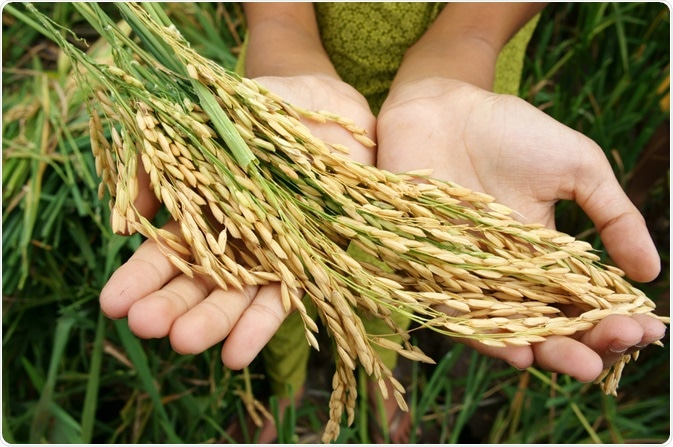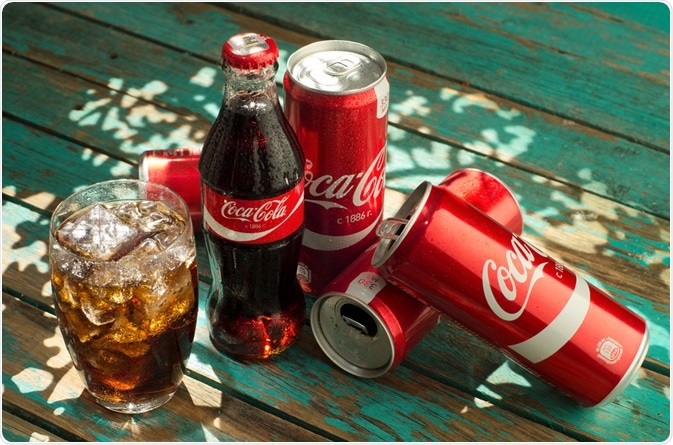Food Science and Artificial Intelligence (AI) is making a significant impact in the food industry. Many distinct areas of the market, from tackling food security issues, promoting health and safety practices in food production facilities, to innovating new products and personalizing product offerings, are benefiting from developments in food science and AI.

Image Credit: xuanhuongho/Shutterstock.com
Food security
Each year, millions of people across the planet go hungry. In 2018, it was estimated that a huge 821 million people suffered from hunger, a figure that has been rising steadily over recent years following decades of steady decline.
The numbers are concerning, and experts believe we need drastic innovation and change in the food industry to tackle it. The world has a Zero Hunger Target by 2030, to meet this, the next decade will need to see the adoption of new technology.
The food industry is facing a huge challenge in terms of food security, mostly related to the increasing demand for food linked with our exponentially growing population, climate change which is causing drought and causing crops to fail, and the competition for farming land that agricultural space faces as rural areas develop into urban areas to cope with the world’s growing population.
Food science and AI offers numerous solutions to tackle these issues and help to ensure food security for years to come.
To begin with, government agencies and organizations such as the World Food Programme (WFP) have been utilizing satellite imagery combined with AI to highlight farming areas that are or may be vulnerable to external factors, such as extreme weather (e.g. droughts).
Using this combination of data, scientists can better predict where crop yields may fail, helping farmers to prepare and take action to prevent this. It also helps the agricultural industry to better understand what areas may be most viable for farming in the coming years, and therefore, establish farms in areas likely to yield the most/highest quality crops.
Recently, Microsoft has launched FarmBeats, a program that aims to promote “data-driven” farming techniques. It leverages the Internet of Things, analyzing data from several connected sources, such as sensors and drones, to carry out “precision farming”, where, for example, measured amounts of water and pesticides can be administered to the land and crops exactly when and where it is needed.
This technique saves on waste, makes farms more efficient, and boosts crop production, ensuring healthy crop yields and reliable food supply.
Food safety compliance
Safety has always been a great focus of the food industry. Food producers and packagers must avoid even the slightest contamination at all costs. Failure to do so can have a drastic impact given its implications for consumer health and safety.
Food companies have begun installing AI-based cameras with the capability of detecting employee activity that isn’t in line with health and safety policies.
For example, the cameras can pick up on if an employee is not wearing the appropriate protective equipment, and alert managers to the breach. The cameras can also use face recognition to detect members of staff who are in unauthorized areas.
The technology has been implemented in the wider food industry, with the Shanghai municipal health agency implementing the camera in over 200 restaurants in Shanghai.
Following the success of the project, which helped managers monitor in real-time the use of proper food protection gear in their kitchens, the agency plans to expand the project to 2000 more restaurants.

Image Credit: Fotazdymak/Shutterstock.com
Improving food products
Numerous food brands are improving their product offering by using AI and deep learning technologies to establish combinations of flavors that will be popular with consumers.
For example, Dodo Pizza uses AI to find combinations of pizza ingredients that are unusual, it also understands how different ingredients interact and how the presence of one ingredient can impact the combination of others. The technology is used to create new and interesting dishes to enhance the consumer experience.
Coca-Cola is another company that has leveraged AI in the same way. Recently, they conducted a study where soda fountains were set up in locations across the US. At these fountains, customers were free to create unique drinks using their own combination of flavors.
Coca-Cola used AI to analyze these combinations to find which flavor combination customers preferred. This data helped them to develop a new drink, Cherry Sprite.
Predicting consumers’ preferences
AI is also being used in the food industry to personalize shopping experiences. Several brands have successfully leverage AI to help them predict what food and drink products customers will prefer to help tailor their shopping experience by making valuable recommendations. Vinify is one such brand, it uses machine learning to advise customers on wines that are adapted to their tastes.
Another example is Tastry, which uses AI together with machine learning, analytical chemistry, and flavor preferences to provide retailers with science-based recommendations for their customers.
Future directions
The food industry is already leveraging AI and food science in major ways, helping to provide solutions across a wide spectrum of industry challenges and opportunities. In the future, we can expect further developments in the capabilities of this technology within the food sector, as well as in its number of applications.
Sources:
- Adamchuk, V., Hummel, J., Morgan, M., and Upadhyaya, S., 2004. On-the-go soil sensors for precision agriculture. Computers and Electronics in Agriculture, 44(1), pp.71-91. https://www.sciencedirect.com/science/article/pii/S0168169904000444
- Food. United Nations. Available at: https://www.un.org/en/
- How AI can improve agriculture for better food security. ITU News. Available at: https://news.itu.int/
- Kakani, V., Nguyen, V., Kumar, B., Kim, H., and Pasupuleti, V., 2020. A critical review on computer vision and artificial intelligence in food industry. Journal of Agriculture and Food Research, 2, p.100033. https://www.sciencedirect.com/science/article/pii/S2666154320300144
- The Amazing Ways Coca Cola Uses Artificial Intelligence And Big Data To Drive Success. Bernard Marr & Co. https://bernardmarr.com/
Further Reading
Last Updated: Sep 6, 2022